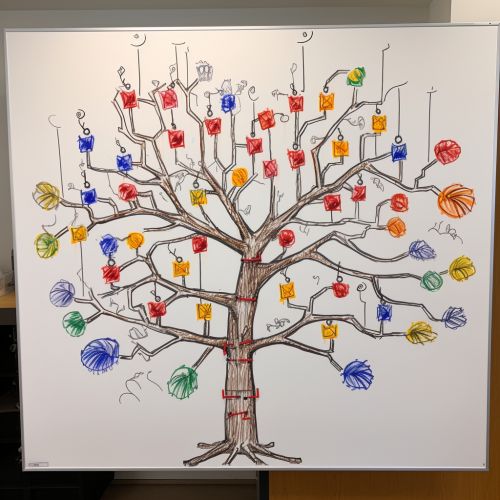Decision Tree Analysis
Introduction
A Decision Tree Analysis is a graphical representation of potential outcomes based on certain decisions. It is a decision support tool that uses a tree-like model of decisions and their possible consequences. This includes chance event outcomes, resource costs, and utility. It is one way to visually display an algorithm that only contains conditional control statements.


History and Development
Decision Tree Analysis has its roots in operations research and decision analysis. It was developed to help identify a strategy most likely to reach a goal. It is also a popular tool in machine learning, data mining, and statistics. The decision tree concept dates back to the 1960s, but has become increasingly popular with the rise of big data and machine learning.
Structure of a Decision Tree
A decision tree is a flowchart-like structure in which each internal node represents a "test" on an attribute (e.g. whether a coin flip comes up heads or tails), each branch represents the outcome of the test, and each leaf node represents a class label (decision taken after computing all attributes). The paths from root to leaf represent classification rules.
Types of Decision Trees
There are many specific decision tree algorithms, including:
- ID3 (Iterative Dichotomiser 3) - C4.5 (successor of ID3) - CART (Classification And Regression Trees) - CHAID (Chi-square Automatic Interaction Detector) - MARS (Multivariate adaptive regression splines) - Conditional Inference Trees
Each of these algorithms has strengths and weaknesses, and the choice of algorithm can be influenced by the data set and the overall goals of the analysis.
Decision Tree Analysis in Machine Learning
In Machine Learning, a decision tree is a predictive model which maps observations about an item to conclusions about the item's target value. More descriptive names for such tree models are classification trees or regression trees. In these tree structures, leaves represent class labels and branches represent conjunctions of features that lead to those class labels.
Advantages and Disadvantages of Decision Trees
There are several advantages to using decision trees for analysis:
- They are simple to understand and interpret. - They require little data preparation. - They are able to handle both numerical and categorical data.
However, they also have some disadvantages:
- They can create overly complex trees that do not generalize well. - They can be unstable because small variations in the data might result in a completely different tree being generated. - They are often relatively inaccurate. Many other predictors perform better with similar data. This can be remedied by replacing a single decision tree with a random forest of decision trees, but a random forest is not as easy to interpret as a single decision tree.
Applications of Decision Tree Analysis
Decision Tree Analysis is used in a variety of fields, including machine learning, data mining, medical diagnosis, cognitive science and artificial intelligence. It is also used in operations research, specifically in decision analysis, to help identify a strategy most likely to reach a goal.
See Also
- Decision Analysis - Machine Learning - Data Mining - Artificial Intelligence - Operations Research
